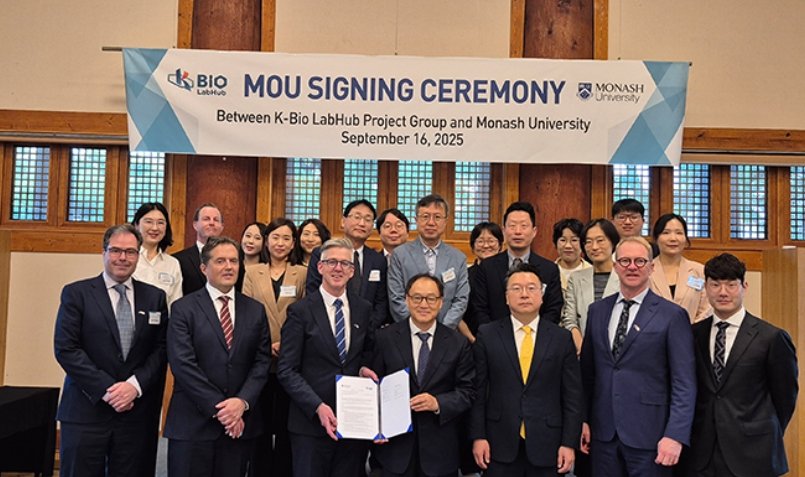
image credit- shutterstock
Japan has one of the highest life expectancies in the world, with over 28 per cent of its population being 65 years or older. And this demographic shift is driving a greater demand for medical devices, as older individuals typically require more healthcare services, including monitoring and treatment equipment. According to the Japan Ministry of Internal Affairs, the number of people aged 65 and older is projected to reach about 36 million by 2040, significantly increasing the demand for an array of medical devices.
Based on this current scenario, market analysts estimate that the medical devices market in Japan, encompassing a diverse range of products including medical equipment for chronic conditions management in healthcare systems and home care settings, drug delivery devices, diagnostic devices, invasive devices, and electronic medical devices, is expected to grow from $21.44 billion in 2024 to $45.2 billion by 2035.
Although Japan boasts high medical standards and manufacturing technology, making it an environment with sustained potential to develop medical devices, there is a limit to the growth of sales of medical device companies within the Japanese market only, thereby necessitating an extension of sales through global expansion. While the US market is regarded as most lucrative for global expansion and economic returns, the Indian market is gradually emerging as a strong field for the Japanese medtech companies to invest into.
And a key reason behind this observation might lie within the recent assessment by the International Monetary Fund (IMF), in its World Economic Outlook (WEO) report released earlier this year, pointing out that India is expected to be the fourth largest economy in the world, surpassing Japan by the end of 2025. Therefore, strategic partnerships between the medical technology players in both countries can prove to be a win-win situation for the entire industry.
Capturing the right beat in India
Backed by rising bilateral confidence and demand for healthcare innovation, India is emerging as a strategic hub for Japanese companies aiming to scale in emerging markets. As of 2024, over 1,450 Japanese companies operate in India; with the medtech sector right now occupying a small part of it.
Although the journey of Japanese medtech players started late in India (in the year 2000), as compared to the Western counterparts, the pace is now picking up with more companies opening their commercial presence within the Indian market, namely Terumo, Olympus, Nipro, Canon, Tosoh, Pentax, Asahi, Omron, Fujifilm, Horiba, Sysmex, Jeol, Konica Minolta, Paramount Bed, TDK etc.
According to Ashish Behera, Strategy Manager, Accenture, “Japanese players who had a late start to the Indian market than western players like GE, Siemens, Phillips, have had a slow and careful growth strategy, mostly adopting an import and sell model, with few players until recently transitioning to local manufacturing through Production Linked Incentive (PLI) scheme such as Omron Group (BP monitors) and Nipro Medical Corporation (dialysers). As the Indian market transforms from a standalone device model to a connected care service model, Japanese players will have to rethink their digital transformation strategy to bundle new services with existing devices and lock in the customer stickiness along the value chain leveraging their superior service quality such as Fujifilm with NURA and AI screening.”
Highlighting the company’s growth strategy in India, Naoshi Kikumoto, Managing Director, Olympus India said, “Training and education have been the key factors where the company has invested in supporting the training needs from clinicians to technicians. Improving the footprint in making value driven propositions of product and services has been the key to the company’s presence in India. Olympus's key strategic priorities for the next 3-5 years focus on innovation, patient safety, and productivity to drive growth and enhance the global medtech industry.”
Likewise, Shishir Agarwal, President and Managing Director, Terumo India pointed out, “Our strategic focus over the next 3 to 5 years is anchored in advancing patient care, strengthening partnerships, and building future-ready capabilities. We aim to move beyond products to deliver integrated healthcare solutions, combining devices, digital tools, and clinical education. The idea extends beyond the device, incorporating interconnected technologies, data-informed insights, and smooth integration with healthcare systems. Deepening collaboration with healthcare providers will help us enhance access and trust across the ecosystem. Internally, we’re investing in talent, innovation, and agility to fuel long-term growth.”
“We are focusing on the emphasis of skill development in the clinical domain, along with digitalisation, regenerative medicine and infection control, as our growth strategy in the medtech sector”, said Milind Pappu, Director, Nipro Medical India.
While there are multiple focus areas such as manufacturing, education, training, collaboration, being picked up by the Japanese medtech companies to strengthen their presence in India, growing use of new technologies such as artificial intelligence (AI), robotics, virtual reality is expected to further shape the Japanese medtech industry’s growth in the coming years.
Banking on Technology
The Japanese government has advanced AI technology in recent years through various initiatives. The Society 5.0 framework is a key government policy that envisions a human-centred society powered by AI and other advanced technologies. Moreover, the government has established AI R&D guidelines, which provide a structured approach to the safe and ethical development of AI technologies.
As reported by the Japanese government, there has been a 15 per cent increase in spending on high-tech medical devices over the past five years, highlighting the market’s shift toward advanced technologies. Further, the government is promoting the development of medical devices using digital technology by building a data utilisation platform available to companies for medical device development in a way that satisfies both ‘medical data’ and ‘ease of access’.
Citing a few recent developments in this direction, Olympus has launched its first AI-powered clinical decision tool, integrating advanced imaging analytics and machine learning; Omron has partnered with Tricog to launch AI-based cardiac care platform in India; Eureka α, developed by Anaut Inc., is Japan's first software as a medical device to support surgeons' visual recognition in real time, utilising AI to analyse real-time video from laparoscopic and robotic surgery.
Japanese companies are investing judiciously in these new technologies to develop new solutions, not only for their domestic needs, but also for the global markets, including India.
“The convergence of AI, robotics, and personalised care will revolutionise the medtech sector, leading to enhanced diagnostic accuracy, precision surgeries, proactive patient management, and improved access to healthcare, especially in underserved areas. AI will enable the creation of tailored treatment plans based on individual patient data and risk factors; while augmented reality and virtual reality will revolutionise surgical training, providing surgeons with realistic simulations and advanced visualisation tools”, said Kikumoto.
On this note, Agarwal adds, “In a nation like India, characterised by its large population and significant healthcare inequalities, the integration of AI, robotics can help close essential gaps in access, affordability, and quality of care.”
Redefining the medical technology landscape, collaborative efforts by both India and Japan can set new examples to address common healthcare challenges such as workforce shortages, ageing population and the regional disparities. But this requires collective support of all stakeholders inclusive of the government, industry, startups, academia, suppliers etc. from both countries.
Some of major recent investments & strategies of the Japanese medtech companies in India
Vrushti Kothari
(vrushti.kothari@mmactiv.com)




